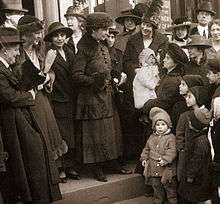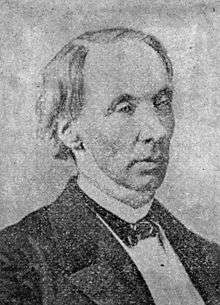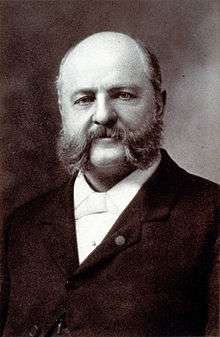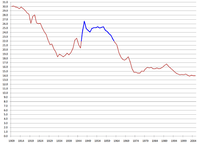Birth control in the United States

Birth control in the United States is a complicated issue with a long history.
History
Birth control before 20th century
The practice of birth control was common throughout the U.S. prior to 1914, when the movement to legalize contraception began. Longstanding techniques included the rhythm method, withdrawal, diaphragms, contraceptive sponges, condoms, prolonged breastfeeding, and spermicides.[1] Use of contraceptives increased throughout the nineteenth century, contributing to a 50 percent drop in the fertility rate in the United States between 1800 and 1900, particularly in urban regions.[2] The only known survey conducted during the nineteenth century of American women's contraceptive habits was performed by Clelia Mosher from 1892 to 1912.[3] The survey was based on a small sample of upper-class women, and shows that most of the women used contraception (primarily douching, but also withdrawal, rhythm, condoms and pessaries) and that they viewed sex as a pleasurable act that could be undertaken without the goal of procreation.[4]

Although contraceptives were relatively common in middle-class and upper-class society, the topic was rarely discussed in public.[5] The first book published in the United States which ventured to discuss contraception was Moral Physiology; or, A Brief and Plain Treatise on the Population Question, published by Robert Dale Owen in 1831.[6] The book suggested that family planning was a laudable effort, and that sexual gratification – without the goal of reproduction – was not immoral.[7] Owen recommended withdrawal, but he also discussed sponges and condoms.[8] That book was followed by Fruits of Philosophy: The Private Companion of Young Married People, written in 1832 by Charles Knowlton, which recommended douching.[9] Knowlton was prosecuted in Massachusetts on obscenity charges, and served three months in prison.[10]
Birth control practices were generally adopted earlier in Europe than in the United States. Knowlton's book was reprinted in 1877 in England by Charles Bradlaugh and Annie Besant, with the goal of challenging Britain's obscenity laws.[11] They were arrested (and later acquitted) but the publicity of their trial contributed to the formation, in 1877, of the Malthusian League – the world's first birth control advocacy group – which sought to limit population growth to avoid Thomas Malthus' dire predictions of exponential population growth leading to worldwide poverty and famine.[12] By 1930, similar societies had been established in nearly all European countries, and birth control began to find acceptance in most Western European countries, except Catholic Ireland, Spain, and France.[13] As the birth control societies spread across Europe, so did birth control clinics. The first birth control clinic in the world was established in the Netherlands in 1882, run by the Netherlands' first female physician, Aletta Jacobs.[14] The first birth control clinic in England was established in 1921 by Marie Stopes, in London.[15]
Contraception outlawed

Contraception was legal in the United States throughout most of the 19th century, but in the 1870s a social purity movement grew in strength, aimed at outlawing vice in general, and prostitution and obscenity in particular.[16] Composed primarily of Protestant moral reformers and middle-class women, the Victorian-era campaign also attacked contraception, which was viewed as an immoral practice that promoted prostitution and venereal disease.[17] Anthony Comstock, a postal inspector and leader in the purity movement, successfully lobbied for the passage of the 1873 Comstock Act, a federal law prohibiting mailing of "any article or thing designed or intended for the prevention of conception or procuring of abortion" as well as any form of contraceptive information.[18] Many states also passed similar state laws (collectively known as the Comstock laws), sometimes extending the federal law by outlawing the use of contraceptives, as well as their distribution. Comstock was proud of the fact that he was personally responsible for thousands of arrests and the destruction of hundreds of tons of books and pamphlets.[19]
Comstock and his allies also took aim at the libertarians and utopians who comprised the free love movement – an initiative to promote sexual freedom, equality for women, and abolition of marriage.[20] The free love proponents were the only group to actively oppose the Comstock laws in the 19th century, setting the stage for the birth control movement.[21]
The efforts of the free love movement were not successful and, at the beginning of the 20th century, federal and state governments began to enforce the Comstock laws more rigorously.[21] In response, contraception went underground, but it was not extinguished. The number of publications on the topic dwindled, and advertisements, if they were found at all, used euphemisms such as "marital aids" or "hygienic devices". Drug stores continued to sell condoms as "rubber goods" and cervical caps as "womb supporters".[22]
Birth control movement
Post World War II

After World War II, the birth control movement had accomplished the goal of making birth control legal, and advocacy for reproductive rights began to focus on abortion, public funding, and insurance coverage.[24]
Birth control advocacy organizations around the world also began to collaborate. In 1946, Sanger helped found the International Committee on Planned Parenthood, which evolved into the International Planned Parenthood Federation and soon became the world's largest non-governmental international family planning organization.[25] In 1952, John D. Rockefeller III founded the influential Population Council.[26] Fear of global overpopulation became a major issue in the 1960s, generating concerns about pollution, food shortages, and quality of life, leading to well-funded birth control campaigns around the world.[27] The 1994 International Conference on Population and Development and the 1995 Fourth World Conference on Women addressed birth control and influenced human rights declarations which asserted women's rights to control their own bodies.[28]
1960s - Sexual revolution and 'The Pill'
In the United States, a flurry of legal actions in the 1960s and 1970s changed the landscape of reproductive rights: in 1965, the Supreme Court ruled in Griswold v. Connecticut that it was unconstitutional for the government to prohibit married couples from using birth control.
In 1965, 26 states prohibited birth control for unmarried women.[29] In 1967 Boston University students petitioned Bill Baird to challenge Massachusetts's stringent "Crimes Against Chastity, Decency, Morality and Good Order" law.[30] On April 6, 1967 he gave a speech to 1,500 students and others at Boston University on abortion and birth control.[31] He gave a female student one condom and a package of contraceptive foam.[31] Baird was arrested and convicted as a felon, facing up to ten years in jail.[32] He spent three months in Boston's Charles Street Jail.[33] During his challenge to the Massachusetts law, the Planned Parenthood League of Massachusetts stated that "there is nothing to be gained by court action of this kind. The only way to remove the limitations remaining in the law is through the legislative process."[34] Despite this opposition, Baird fought for five years until Eisenstadt v. Baird legalized birth control for all Americans on March 22, 1972. Eisenstadt v. Baird, a landmark right to privacy decision, became the foundation for such cases as Roe v. Wade and the 2003 gay rights victory Lawrence v. Texas.
In 1970, Congress removed references to contraception from federal anti-obscenity laws;[35] and in 1973, the Roe v. Wade decision legalized abortion during the first trimester of pregnancy.[36]

During the same time period, the pharmaceutical industry was steadily developing new modes of contraception. In the early 1950s, philanthropist Katharine McCormick provided funding for biologist Gregory Pincus to develop the birth control pill, which was approved by the Food and Drug Administration (FDA) in 1960.[37] The pill became very popular and had a major impact on society and culture. It contributed to a sharp increase in college attendance and graduation rates for women.[38] New forms of intrauterine devices were introduced in the 1960s, increasing popularity of long acting reversible contraceptives.[39]
In 1982, European drug manufacturers developed mifepristone, which was initially utilized as a contraceptive, but is now generally prescribed with a prostoglandin to induce abortion in pregnancies up to the fourth month of gestation.[40] To avoid consumer boycotts organized by anti-abortion organizations, the manufacturer donated the U.S. manufacturing rights to Danco Laboratories, a company formed by pro-choice advocates, with the sole purpose of distributing mifepristone in the U.S, and thus immune to the effects of boycotts.[41]
In 1997, the FDA approved a prescription emergency contraception pill (known as the morning-after pill), which became available over the counter in 2006.[42] In 2010, ulipristal acetate, an emergency contraceptive which is more effective after a longer delay was approved for use up to five days after unprotected sexual intercourse.[43] Fifty to sixty percent of abortion patients became pregnant in circumstances in which emergency contraceptives could have been used.[44] These emergency contraceptives, including Plan B and EllaOne, became another reproductive rights controversy.[45] Opponents of emergency contraception consider it a form of abortion, because it may interfere with the ability of a fertilized embryo to implant in the uterus; while proponents contend that it is not abortion, because the absence of implantation means that pregnancy never commenced.[46]
Another area of contention surrounding birth control in the latter part of the twentieth century was insurance coverage and public funding. Conservative groups lobbied to restrict state and federal funds to groups such as Planned Parenthood, and to limit birth control coverage by insurance companies.[47] In 1970, Title X of the Public Health Service Act was enacted as part of the war on poverty, to make family planning and preventive health services available to low-income and the uninsured.[48] Without publicly funded family planning services, according to the Guttmacher Institute, the number of unintended pregnancies and abortions in the United States would be nearly two-thirds higher; the number of unintended pregnancies among poor women would nearly double.[49] According to the United States Department of Health and Human Services, publicly funded family planning saves nearly $4 in Medicaid expenses for every $1 spent on services.[50]
Current practices
There are many types of contraceptive methods available. Hormonal methods which contain the hormones estrogen and progestin include oral contraceptive pills (there is also a progestin only pill), transdermal patch (OrthoEvra), and intravaginal ring (NuvaRing). Progestin only methods include an injectable form (Depo-Provera), a subdermal implant (Nexplanon), and the intrauterine device (Mirena). Non-hormonal contraceptive methods include the copper intrauterine device (ParaGard), male and female condoms, male and female sterilization, cervical diaphragms and sponges, spermicides, withdrawal, and fertility awareness.
In 2006-2008, the most popular contraceptive methods among those at risk of unintended pregnancy were oral contraceptive pills (25%), female sterilization (24.2%), male condoms (14.5%) and male sterilization (8.8%).[51] Intrauterine device (4.9%), Withdrawal (4.6%).[51] Depo-Provera is used by 2.9%, primarily younger women (7.5% of those 15-19 and about 4.5% of those 20-30).[51]
A 2013 Lancet systematic literature review found that among reproductive aged women in a marriage or union, 66% worldwide and 77% in the United States use contraception. Despite this unintended pregnancy remains high; just under half of pregnancies in the United States are unintended. 10.6% of women at risk of unintended pregnancy did not use a contraceptive method, including 18.7% of teens and 14.3% of those 20-24.[51] Women of reproductive age (15 to 44) who are not regarded as at risk for unintended pregnancy include those who are sterile, were sterilized for non-contraceptive reasons, were pregnant or trying to become pregnant, or had not had sex in the 3 months prior to the survey.[51] When examining reasons why women do not use birth control, s 2007 Pregnancy Risk Monitoring Assessment System (PRAMS) survey of over 8000 women with a recent unintended pregnancy found that 33% felt they could not get pregnant at the time of conception, 30% did not mind if they got pregnant, 22% stated their partner did not want to use contraception, 16% cited side effects, 10% felt they or their partner were sterile, 10% reported access problems, and 18% selected "other".
Cost savings
Contraceptive use saves almost US $19 billion in direct medical costs each year.[52]
Additional Benefits
Contraception has many benefits beyond preventing pregnancy. Combination estrogen-progestin contraceptives can successfully treat dysmenorrhea (painful periods), provide symptom relief from endometriosis, reduce heavy menstrual bleeding and improve anemia related to menstrual blood loss, reduce symptoms of premenstrual syndrome and premenstrual dysphoric disorder, reduce ovarian and colon cancer risk, reduce moderate acne, prevent of menstrual migraines, and reduce hirsutism (abnormal hair growth). The progestin containing intrauterine device can reduce heavy menstrual bleeding and protect against pre-cancerous changes or cancer in the uterus. Condoms (male or female) are the contraceptive method which protects against acquisition of sexually transmitted infections.
Government and policy
Domestic
- Funding
- Goals
International
Legislation
In two major legal cases that were planned in 2014, the attorneys made an issue of whether a for-profit corporation can be required to provide coverage for contraceptive services to its employees.[53] As of 1 January 2016, women in Oregon will be eligible to purchase a one-year supply of oral contraceptive; this is the first such legislation in the United States and has attracted the attention of California, Washington state and New York.[54]
Notable organizations
- Planned Parenthood Federation of America
- EngenderHealth
- Guttmacher Institute
- American Social Health Association
- Sexuality Information and Education Council of the United States
Influence of religion
In 2014, the Supreme Court decided that for-profit corporations may offer insurance plans that do not cover contraception, by the rationale that the owners may hold that certain contraceptives violate their religious beliefs. This was a setback for the federal government's attempt to create a uniform set of health care insurance benefits.[55][56]
See also
- American family structure
- Abortion in the United States
- Women's rights
- Sex education in the United States
- HIV/AIDS in the United States
- History
- Rush Limbaugh–Sandra Fluke controversy
References
Footnotes
- ↑ Engelman, pp. 3–4.
- ↑ Engelman, p. 5. Fertility rate dropped from 7 to 3½ children per couple.
- ↑ Engelman, p. 11.
- ↑ Tone, pp. 73–75.
Engelman, pp. 11–12. - ↑ Engelman, pp. 5–6. Rarely in public: Engelman cites Brodie, Janet, Contraception and Abortion in 19th Century America, Cornell University Press, 1987.
- ↑ Engelman, p. 6.
Cullen DuPont, Kathryn (2000), "Contraception" in Encyclopedia of women's history in America, Infobase Publishing, p. 53 (first book in America).
Year of publication is variously stated as 1830 or 1831. - ↑ Engelman, p. 6.
- ↑ Engelman, pp. 6–7.
- ↑ Riddle, John M. (1999), Eve's Herbs: A History of Contraception and Abortion in the West, Harvard University Press, pp. 226–7.
- ↑ Engelman, p. 7.
- ↑ Engelman, pp. 7–8.
- ↑ Engelman, pp. 8–9.
- ↑ "Contraception", in Women's studies encyclopedia, Volume 1, Helen Tierney (Ed.), Greenwood Publishing Group, 1999, p. 301.
- ↑ Engelman, pp. 9, 47.
- ↑ Ahluwalia, Sanjam (2008), Reproductive Restraints: Birth Control in India, 1877–1947, University of Illinois Press, p. 54.
- ↑ Tone, p. 17.
Engelman, pp. 13–14. - ↑ Engelman, pp. 13–14.
- ↑ Engelman, p. 15.
- ↑ Engelman, pp. 15–16.
- ↑ Beisel, Nicola Kay (1998), Imperiled Innocents: Anthony Comstock and Family Reproduction in Victorian America, Princeton University Press, pp. 76–78.
- 1 2 Engelman, p. 20.
- ↑ Engelman, pp. 18–19.
- ↑ CDC Bottom of this page http://www.cdc.gov/nchs/products/vsus.htm "Vital Statistics of the United States, 2003, Volume I, Natality", Table 1-1 "Live births, birth rates, and fertility rates, by race: United States, 1909-2003."
- ↑ Engelman, p 186.
- ↑ Esser-Stuart, Joan E., "Margaret Higgins Sanger", in Encyclopedia of Social Welfare History in North America, Herrick, John and Stuart, Paul (Eds), SAGE, 2005, p. 323.
- ↑ Chesler, pp. 425–428.
- ↑ Tone, pp. 207–208, 265–266.
- ↑ Cook, Rebecca J.; Mahmoud F. Fathalla (September 1996). "Advancing Reproductive Rights Beyond Cairo and Beijing". International Family Planning Perspectives. 22 (3): 115–121. doi:10.2307/2950752.
See also: Petchesky, Rosalind Pollack (2001), "Reproductive Politics", in The Oxford Companion to Politics of the World, Joël Krieger, Margaret E. Crahan (Eds.), Oxford University Press, pp. 726–727. - ↑ "A Brief History of Birth Control". Retrieved 8 September 2012.
- ↑ "William Baird makes history". Boston University News. April 12, 1967.
- 1 2 "Birth Control 'Crusader' Arrested After BU Lecture". The Boston Herald. April 7, 1967.
- ↑ "Crusader Baird Faces 10-year Prison Term". Long Island Star Journal. September 11, 1967.
- ↑ "Baird Gets 3 Months For Birth Control Advice to Students". Boston Record American. May 20, 1969.
- ↑ "Publicity--Too Much?". Planned Parenthood News. Spring 1967.
- ↑ Engelman, p. 184.
- ↑ Roe v. Wade, 410 U.S. 113 (1972). Findlaw.com. Retrieved 26 January 2007.
- ↑ Tone, pp. 204–207.
Engelman, Peter, "McCormick, Katharine Dexter", in Encyclopedia of Birth Control, Vern L. Bullough (Ed.), ABC-CLIO, 2001, pp. 170–171.
Engelman, p. 182 (FDA approval). - ↑ "TIME Magazine Cover: The Pill". Time.com. April 7, 1967. Retrieved 2010-03-20.
Goldin, Claudia; Lawrence Katz (2002). "The Power of the Pill: Oral Contraceptives and Women's Career and Marriage Decisions". Journal of Political Economy. 110 (4): 730–770. doi:10.1086/340778. - ↑ Lynch, Catherine M. "History of the IUD". Contraception Online. Baylor College of Medicine. Archived from the original on 2006-01-27. Retrieved 2006-07-09.
- ↑ The drug is also known as RU-486 or Mifeprex.
Mifepristone is still used for contraception in Russia and China.
Ebadi, Manuchair, "Mifepristone" in Desk reference of clinical pharmacology, CRC Press, 2007, p. 443, ISBN 978-1-4200-4743-1.
Baulieu, Étienne-Émile; Rosenblum, Mort (1991). The "abortion pill" : RU-486, a woman's choice. Simon & Schuster. ISBN 0-671-73816-X.
Mifeprex prescribing information (label). Retrieved 24 January 2012.
Mifeprex (mifepristone) Information. Retrieved 24 January 2012.
FDA approval letter to Population Council. 28 September 2000. Retrieved 24 January 2012. - ↑ Kolata, Gina (September 29, 2000). "U.S. approves abortion pill; drug offers more privacy and could reshape debate". The New York Times. p. A1. Retrieved 15 November 2011.
- ↑ The FDA approved the Yuzpe regimen in 1997.
Levonorgestrel (Plan B) was approved, by prescription, in 1999.
Ebadi, Manuchair, "Levonorgestrel", in Desk Reference of Clinical Pharmacology, CRC Press, 2007, p. 338, ISBN 978-1-4200-4743-1.
Updated FDA Action on Plan B (levonorgestrel) Tablets (press release). 22 April 2009. Retrieved 24 January 2012.
FDA Approves Over-the-Counter Access for Plan B for Women 18 and Older (press release). 24 August 2006. Retrieved 24 January 2012.
The phrase "morning after pill" is a misnomer, because it can be taken several days after unprotected sexual intercourse to have an effect to reduce the rates of an unplanned pregnancy. - ↑ The drug is known as ulipristal acetate or by the brand name ella.
Sankar, Nathan, Oxford Handbook of Genitourinary Medicine, HIV, and Sexual Health, Oxford University Press, 2010, p. 386, ISBN 978-0-19-957166-6.
ella, ulipristal acetate. FDA Reproductive Health Drugs Advisory Committee report. 17 June 2010. Retrieved 24 January 2012.
Prescribing information for ella. Retrieved 24 January 2012
FDA approves ella™ tablets for prescription emergency contraception (press release). 13 August 2012. Retrieved 24 January 2012. - ↑ Speroff, Leon (2010), A Clinical Guide for Contraception, Lippincott Williams & Wilkins, ISBN 978-1-60831-610-6, pp. 153–155.
- ↑ Jackson, p. 89.
Gordon (2002), p. 336. - ↑ McBride, Dorothy (2008), Abortion in the United States: a Reference Handbook, ABC-CLIO, ISBN 978-1-59884-098-8, pp. 67–68.
- ↑ Gordon (2002), p. 308.
Engelman, p. 186.
Solinger, Rickie, Abortion Wars: a Half Century of Struggle, 1950–2000, University of California Press, 1998, ISBN 978-0-520-20952-7, p. 264.
Baker, Debra, "Viagra Spawns Birth Control Issue", ABA Journal, August 1998, p. 36.
Feldt, Gloria; and Fraser Laura, The War on Choice: the Right-Wing Attack on Women's Rights and How to Fight Back, Random House Digital, Inc., 2004, ISBN 978-0-553-38292-1, p. 232. - ↑ Office of Population Affairs Clearinghouse. "Fact Sheet: Title X Family Planning Program." Archived April 5, 2012, at the Wayback Machine. January 2008.
- ↑ "Facts on Publicly Funded Contraceptive Services in the United States". Guttmacher Institute. August 2011. Retrieved 2 March 2012.
- ↑ "Family Planning - Overview". Healthy People 2020. U.S. Department of Health and Human Services. Retrieved 5 March 2012. The DHHS cites:
Gold RB, Sonfield A, Richards C, et al., Next steps for America's family planning program: Leveraging the potential of Medicaid and Title X in an evolving health care system, Guttmacher Institute, 2009; and
Frost J, Finer L, Tapales A., "The impact of publicly funded family planning clinic services on unintended pregnancies and government cost savings", J Health Care Poor Underserved, 2008 Aug, 19(3):778-96. - 1 2 3 4 5 Hatcher, Robert D. (2011). Contraceptive Technology (20th ed.). Ardent Media, Inc. ISBN 978-1-59708-004-0.
- ↑ James Trussell; Anjana Lalla; Quan Doan; Eileen Reyes; Lionel Pinto; Joseph Gricar (2009). "Cost effectiveness of contraceptives in the United States". Contraception. 79 (1): 5–14. doi:10.1016/j.contraception.2008.08.003. PMC 3638200
 . PMID 19041435.
. PMID 19041435. - ↑ "Contraception at Risk". New England Journal of Medicine: 131211140229007. 2013. doi:10.1056/NEJMe1315461.
- ↑ Kumar, Sheila V (12 June 2015). "Oregon women can get a year's supply of birth control". Pharmaceutical Processing. Associated Press.
- ↑ Hamel, Mary Beth; Annas, George J.; Ruger, Theodore W.; Ruger, Jennifer Prah (2014). "Money, Sex, and Religion — The Supreme Court's ACA Sequel". New England Journal of Medicine: 140716140038002. doi:10.1056/NEJMhle1408081. ISSN 0028-4793.
- ↑ Cohen, I. Glenn; Lynch, Holly Fernandez; Curfman, Gregory D. (2014). "When Religious Freedom Clashes with Access to Care". New England Journal of Medicine. 371 (7): 596–599. doi:10.1056/NEJMp1407965. ISSN 0028-4793.
Sources
- Baker, Jean H. (2011), Margaret Sanger: A Life of Passion, Macmillan, ISBN 978-0-8090-9498-1.
- Buchanan, Paul D. (2009), American Women's Rights Movement: A Chronology of Events and of Opportunities from 1600 to 2008, Branden Books, ISBN 978-0-8283-2160-0.
- Chesler, Ellen (1992), Woman of Valor: Margaret Sanger and the Birth Control Movement in America, Simon & Schuster, ISBN 0-671-60088-5.
- Cox, Vicki (2004), Margaret Sanger: Rebel For Women's Rights, Chelsea House Publications, ISBN 0-7910-8030-7.
- Engelman, Peter C. (2011), A History of the Birth Control Movement in America, ABC-CLIO, ISBN 978-0-313-36509-6.
- Gordon, Linda (1976), Woman's Body, Woman's Right: A Social History of Birth Control in America, Grossman Publishers, ISBN 978-0-670-77817-1.
- Gordon, Linda (2002), The Moral Property of Women: a History of Birth Control Politics in America, University of Illinois Press, ISBN 978-0-252-02764-2.
- Hajo, Cathy Moran (2010), Birth Control on Main Street: Organizing Clinics in the United States, 1916–1939, University of Illinois Press, ISBN 978-0-252-03536-4.
- Jackson, Emily (2001), Regulating reproduction: law, technology and autonomy, Hart Publishing, ISBN 978-1-84113-301-0.
- Kennedy, David (1970), Birth Control in America: The Career of Margaret Sanger, Yale University Press, ISBN 978-0-300-01495-2.
- McCann, Carole Ruth (1994), Birth Control Politics in the United States, 1916–1945 , Cornell University Press, ISBN 978-0-8014-8612-8.
- McCann, Carole Ruth (2010), "Women as Leaders in the Contraceptive Movement", in Gender and Women's Leadership: A Reference Handbook, Karen O'Connor (Ed), SAGE, ISBN 978-1-4129-6083-0.
- Tone, Andrea (2002), Devices and Desires: A History of Contraceptives in America, Hill and Wang, ISBN 978-0-8090-3816-9.
Further reading
- Coates, Patricia Walsh (2008), Margaret Sanger and the Origin of the Birth Control Movement, 1910–1930: The Concept of Women's Sexual Autonomy, Edwin Mellen Press, ISBN 978-0-7734-5099-8.
- Goldman, Emma (1931), Living My Life, Knopf, ISBN 978-0-87905-096-2 (1982 reprint).
- Rosen, Robyn L. (2003), Reproductive Health, Reproductive Rights: Reformers and the Politics of Maternal Welfare, 1917–1940, Ohio State University Press, ISBN 978-0-8142-0920-2.
- Sanger, Margaret (1938), An Autobiography, Cooper Square Press, ISBN 0-8154-1015-8.